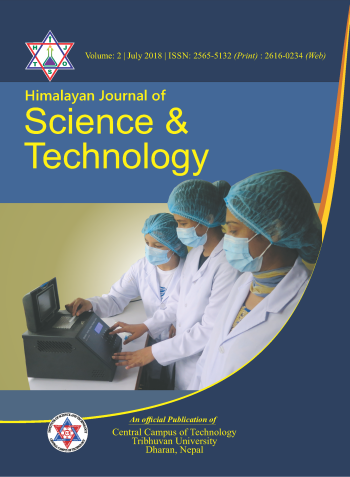Intestinal Parasitosis among Human Immunodeficiency Virus Infected Patients Visiting Different Care Centers of Eastern Nepal
DOI:
https://doi.org/10.3126/hijost.v2i0.25836Keywords:
Prevalence, HIV/AIDS patients, gastrointestinal parasites, Eastern NepalAbstract
Gastrointestinal parasitic infections are the major sources of diarrheal disease in developing countries and Human Immunodeficiency virus (HIV) infected patients are at the most risk. The objective of this study was to determine the prevalence of intestinal parasitic infections (IPIs) in the HIV-infected individuals visiting different care centers of Morang and Sunsari districts. The present cross-sectional study was conducted from two different HIV rehabilitation centers and one antiretroviral therapy center from eastern Nepal. A semi structured questionnaires was provided to HIV patients and 149 stool specimens were collected to analyze macroscopically and microscopically for the presence of enteric parasites. Data were analyzed by SPSS version 16. A total of 149 HIV seropositive patients with and without diarrhea were included in the study. Overall prevalence rate of enteroparasites was 19.46%. The prevalence rate of enteric parasites in HIV patients showed higher rate of protozoan infections (58.6%) than helminths (41.4%). High prevalence of parasitic infection was seen in male and also among male in the age groups of 31-40 years. The polyparasitism was not detected. A significant difference (p<0.05) was observed in the level of infection of intestinal parasites between the HIV seropositive with gastrointestinal tract (GIT) symptoms and HIV seropositive without GIT symptoms. The enteric parasitic infections were detected in 19.46% among HIV seropositive patients. Early detection of enteric parasitic infections could help in the management and improvement of the quality of life for HIV-infected individuals.
Downloads
Downloads
Published
How to Cite
Issue
Section
License
© Himalayan Journal of Science and Technology
All rights reserved.




